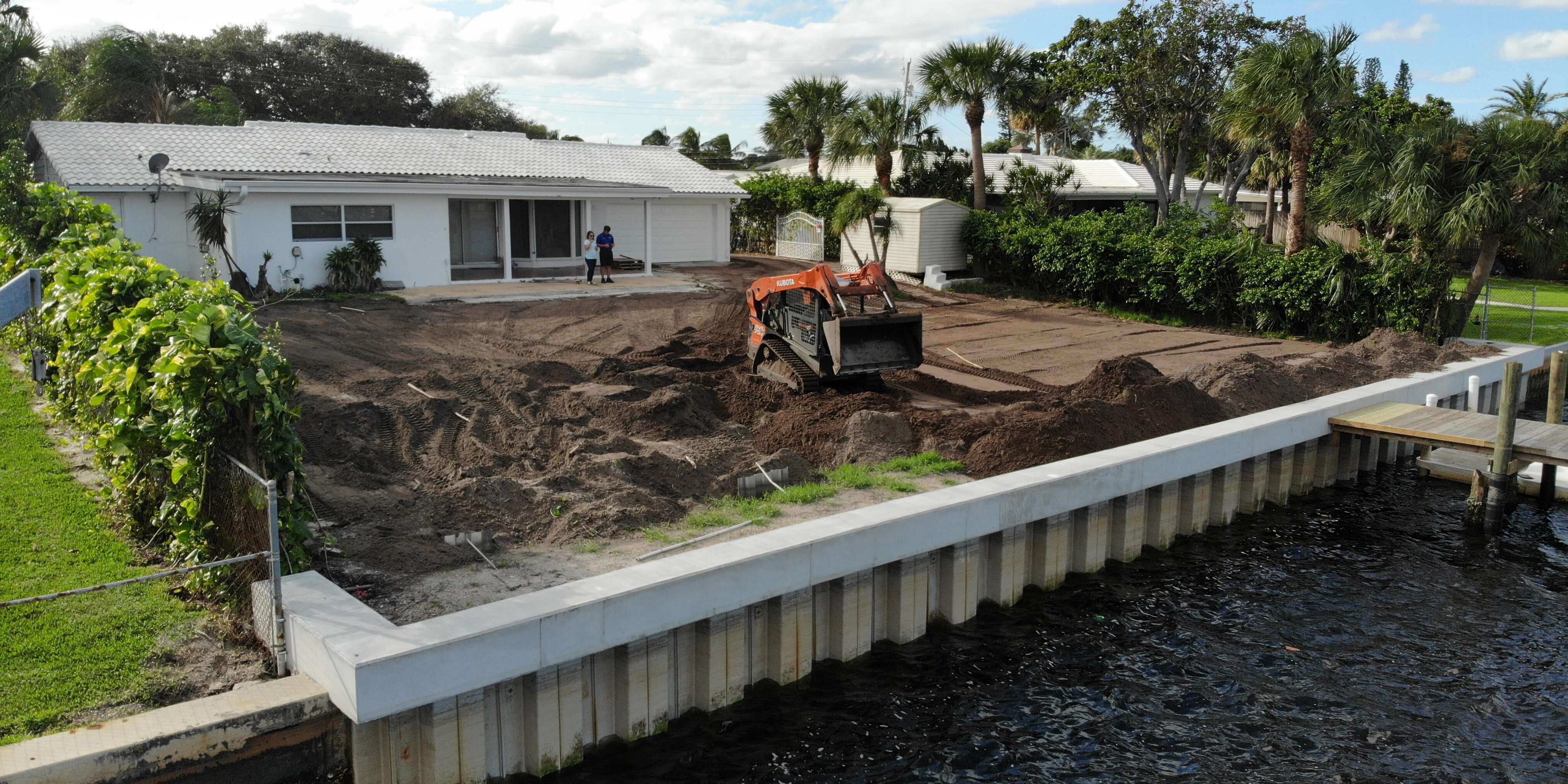Introduction
Coastal properties in West Palm Beach face unique environmental challenges due to their proximity to the ocean and fluctuating water levels. Designing and constructing seawalls in this region requires careful attention to environmental factors to ensure durability and ecological balance. This article explores the essential environmental considerations involved in seawall design and construction for coastal properties in West Palm Beach, offering insights into sustainable practices that protect both property and the surrounding ecosystem.
Why Seawalls Are Important for Coastal Properties in West Palm Beach
Seawalls serve as critical infrastructure for waterfront homes in West Palm Beach, providing protection from coastal erosion, storm surges, and rising sea levels. The natural forces of wind, waves, and tides continually threaten these properties, making seawall design a vital part of coastal property management. However, the construction of seawalls also impacts marine and shoreline environments, making environmental considerations key to responsible development.
Key Environmental Factors in Seawall Design
When constructing seawalls for coastal properties in West Palm Beach, several environmental factors must be taken into account such as tidal patterns, local marine ecosystems, and long-term erosion. For expert guidance tailored to your needs, please feel free to contact us.
1. Impact on Coastal Ecosystems
Seawalls can alter natural habitats for marine life, birds, and plants. In West Palm Beach, coastal wetlands and mangroves serve as nurseries for many species. Seawall designs should aim to minimize disruption to these habitats by incorporating eco friendly materials and avoiding unnecessary land clearance.
2. Water Flow and Sediment Transport
Water flow and sediment movement along the shoreline influence beach stability. Improperly designed seawalls can cause increased erosion in adjacent areas. Coastal engineers must study sediment transport patterns to design seawalls that reduce adverse effects on neighboring waterfront homes in West Palm Beach.
3. Sea Level Rise and Climate Change
Rising sea levels and increased storm intensity due to climate change are critical considerations. Seawalls must be constructed with future conditions in mind, often requiring higher elevations and robust materials to withstand extreme weather events common in South Florida.
4. Permitting and Regulatory Compliance
Environmental protection regulations in West Palm Beach require seawall projects to undergo thorough environmental assessments and obtain permits from agencies such as the Florida Department of Environmental Protection. Adherence to these regulations ensures that seawall construction aligns with local environmental standards.
Sustainable Seawall Materials and Methods
Selecting appropriate materials and construction methods can reduce environmental impact while enhancing seawall longevity.
| Material Type | Environmental Impact | Durability | Suitability for West Palm Beach |
|---|---|---|---|
| Concrete | Moderate, can leach chemicals | High | Commonly used due to strength and availability |
| Vinyl or PVC | Low, non toxic and recyclable | Moderate | Good for environmentally sensitive areas |
| Steel | High, prone to corrosion | High with treatment | Used where strength is critical |
| Timber | Variable, depends on sourcing | Low to Moderate | Less common due to susceptibility to decay |
| Eco friendly Composites | Low, made from recycled materials | Moderate to High | Emerging option with growing adoption |
In West Palm Beach, combining durable materials such as treated concrete with environmentally friendly techniques helps maintain the balance between property protection and ecological preservation. For a deeper understanding of the company’s approach to sustainable seawall solutions and their expertise in the region, visit Coast Seawall’s About page.
Design Strategies for Environmental Protection
Several design strategies can be incorporated to minimize environmental disruption:
Use of Living Shorelines
Incorporating living shorelines with natural vegetation and oyster reefs alongside seawalls can provide additional erosion control while enhancing biodiversity.
Step Down Designs
Stepped or tiered seawall designs reduce wave energy more effectively and allow for habitat niches that support marine organisms.
Incorporating Drainage Systems
Proper drainage within seawall construction prevents stagnant water accumulation and protects nearby freshwater sources in West Palm Beach from contamination.
Maintenance and Environmental Monitoring
Ongoing maintenance is essential for seawalls protecting coastal properties in West Palm Beach. Environmental monitoring programs help track changes in shoreline conditions, enabling timely repairs and adjustments to reduce negative ecological impacts.
Conclusion
Environmental considerations in seawall design and construction are vital for protecting coastal properties in West Palm Beach while preserving the delicate balance of local ecosystems. By integrating sustainable materials, innovative design strategies, and regulatory compliance, seawall projects can offer long term resilience against coastal hazards. For homeowners and developers in West Palm Beach, understanding these factors is crucial to making informed decisions that safeguard both property and nature.
For more information on seawall construction and environmental best practices in West Palm Beach, visit Coast Seawall and explore their detailed services for seawalls in West Palm Beach, FL.
Frequently Asked Questions
How does a seawall affect nearby beaches and coastal ecosystems?
If not properly designed, seawalls can cause increased erosion downstream and disrupt natural habitats. Sustainable design aims to minimize these effects.
Are there alternatives to traditional seawalls for coastal protection?
Yes, options like living shorelines, breakwaters, and natural dune restoration offer environmentally friendly alternatives or complements to seawalls.
Can seawalls help with rising sea levels due to climate change?
Seawalls can be designed to accommodate projected sea level rise, but combining them with other strategies such as elevation of structures and natural buffers is advisable.








